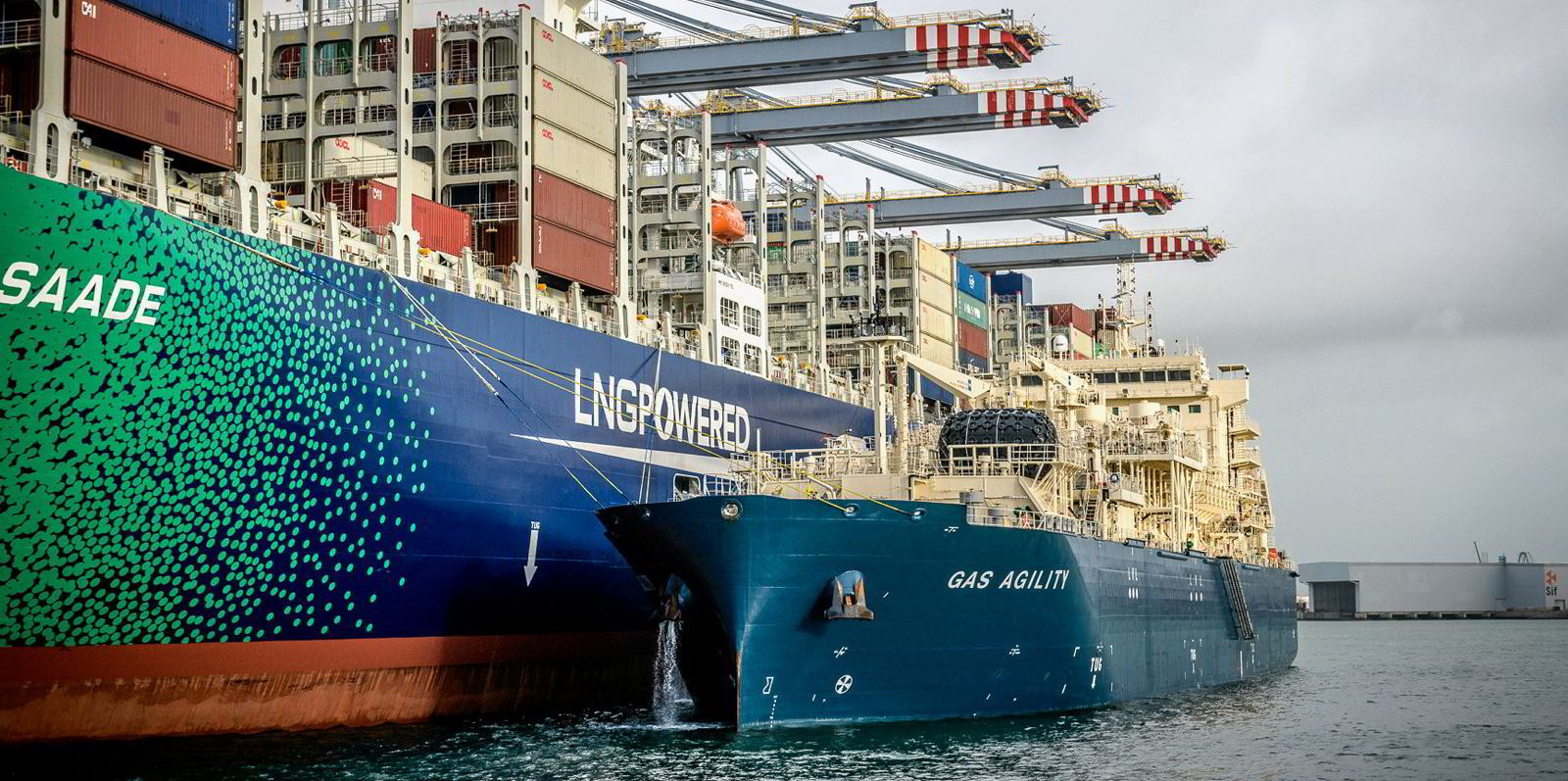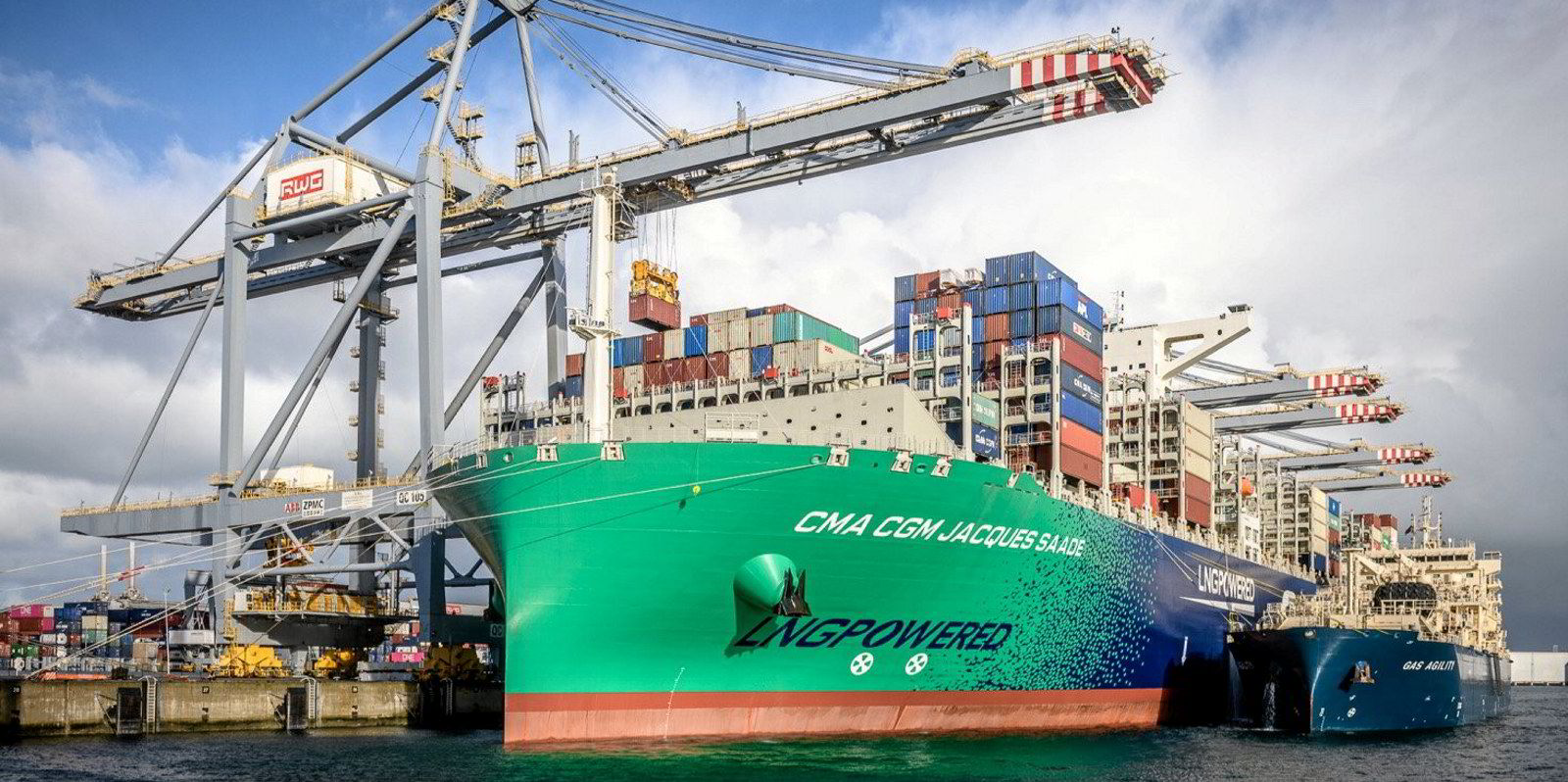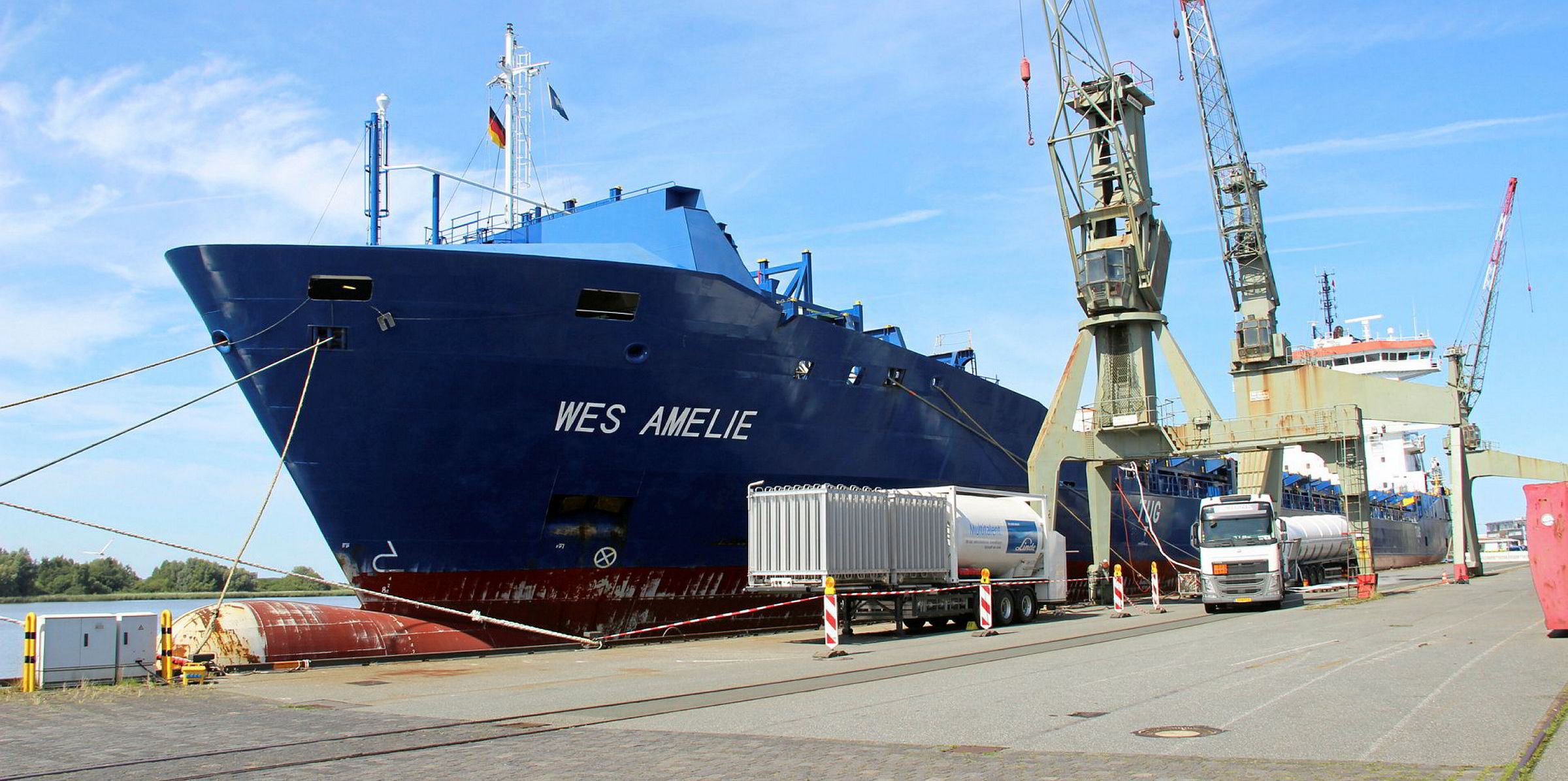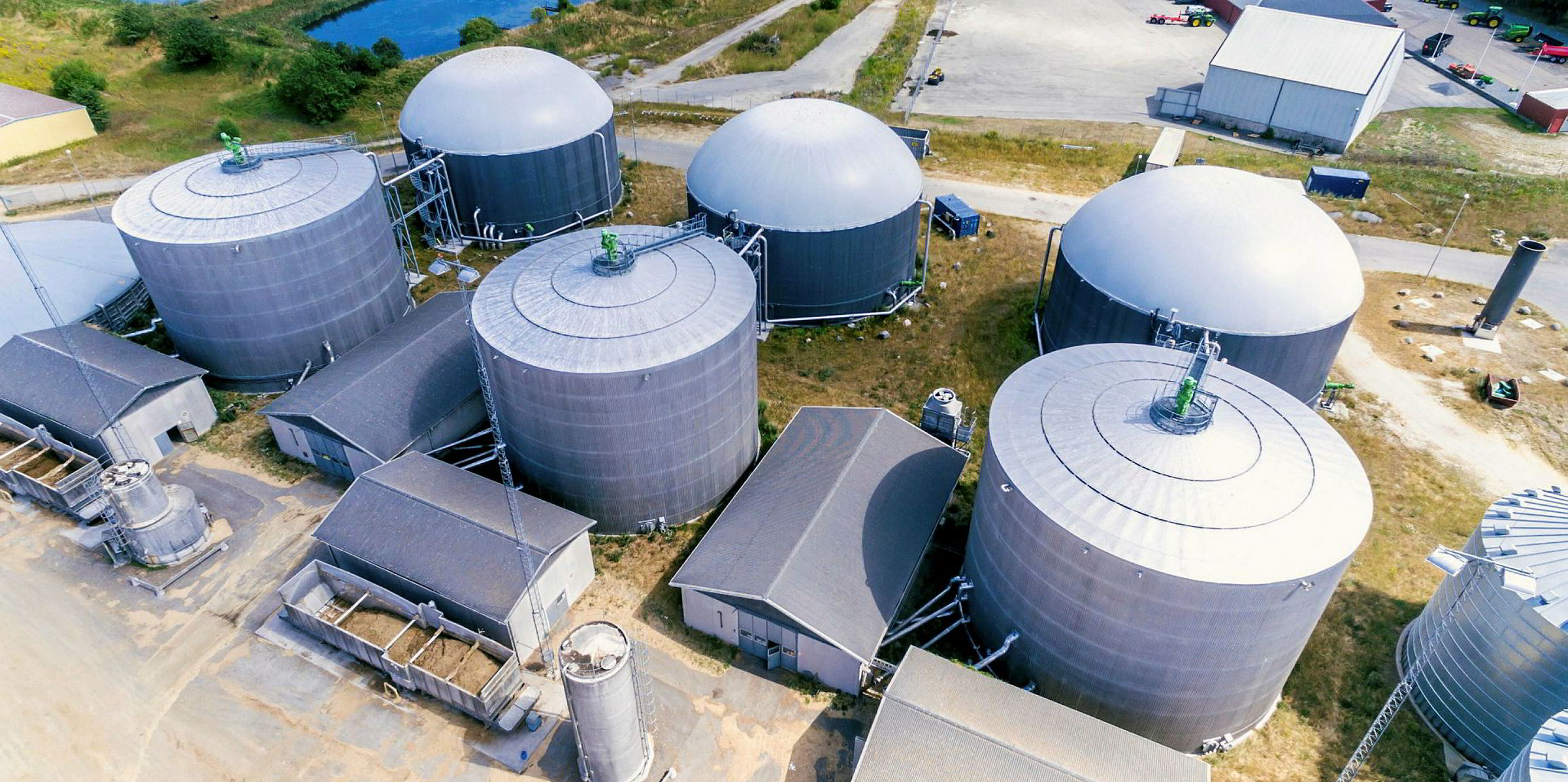Total’s bunkering arm has included bio-LNG as part of the bunkers delivered to a pioneering CMA CGM containership in a bid to lower carbon emissions further.
French energy major Total and liner giant CMA CGM said 13% of the 17,300 cbm of the fuel supplied to the 23,000-teu CMA CGM Jacques Saade (built 2020) was bio-LNG.
Using the the Guarantee of Origin certificate system, Total supplied the bio-LNG from Total’s own production in the Netherlands.
The milestone bunkering of the LNG-fuelled CMA CGM Jacques Saade started on 12 November and was completed in around 24 hours on the following day. It saw the Total Marine Fuels Global Solutions-chartered, 18,600-cbm Gas Agility (built 2020) deliver the largest single supply of LNG bunkers to a vessel in an industry first.
The Mitsui OSK Lines-owned LNG bunker vessel completed the bunkering at the Rotterdam World Gateway terminal simultaneously with cargo operations.
Going Dutch
The bio-methane for the bunkering operation was sourced from the Groen Gas Haarlemmermeer facility in the Schipol area of the Netherlands, a joint venture between Dutch waste management company, Meerlanden, and Total's Netherlands unit. The plant produces bio-methane mainly from organic municipal waste.
“The development of bio and synthetic LNG, which is derived from the synthesis of CO2 and hydrogen, will further drive forward LNG as a viable pathway to support the International Maritime Organization’s strategy on reducing GHG emissions from international shipping,” Total and CMA CGM said.
Total’s vice president of marine fuels Jerome Leprince-Ringuet, who is also managing director of the major’s bunkering affiliate Total Marine Fuels Global Solutions (TMFGS), described the addition of bio-LNG as “groundbreaking”.
He said the delivery at this scale is a first for the shipping industry.
Landmark
“We are selling not only LNG but also bio-LNG,” he told TradeWinds. “We are going even further.
“I think we can be quite proud of being able to deliver to our customer supply [that is] at an even lower carbon footprint that has already been provided by LNG. This is a really landmark achievement.”
This is the start of a journey. By 2021 we will be in cruise mode
Jerome Leprince-Ringuet
LNG makes it possible to eliminate:
- 99% of sulphur oxide emissions
- 99% of fine particles emissions
- up to 85% of nitrogen oxide emissions
- an LNG-powered vessel emits up to 20% less CO2 than conventionally fuelled vessels
The executive declined to put a figure on how GHG emissions would be saved by the biomethane parcel, saying more homework needs to be done to establish the correct figures on this.
He also would not comment on the likely additional cost of the biomethane swap in.
Both Total and CMA CGM have stated ambitions of being net zero companies by 2050.
They described LNG as “the best, immediately available solution in terms of energy transition to help reduce the environmental footprint of maritime transport.”
Leprince-Ringuet pointed to CMA CGM’s agreement signed with Total on LNG supply in 2017 and the two companies’ partnership with others under the currently named Coalition for the Energy of the Future under which both are working on the energy transition in shipping.
He said to decrease further the industry’s carbon footprint bunker supply needs to go beyond LNG and bio-LNG is one solution.
“It is a good demonstration of the fact that LNG is participating towards the energy transition in shipping,” Leprince-Ringuet said.
He believes the industry will need this mix of solutions as it moves to cut its carbon emissions. But he said. “Those that are ready now and will likely help decarbonisation – we should not be shy on taking them to shipping.”
Total has recently developed a biogas business unit within the group’s gas division to improve its portfolio and offering to marine customers.
“We aim to increase our supplies of biogas,” Leprince-Ringuet said. “We are at the start of a journey on this at Total.”
Kickstarting the journey
He said there is enough availability of bio-LNG to make it part of the energy mix for maritime.
“I think that is the best way to kickstart and also probably to promote capacity building in this space,” he added.
Leprince-Ringuet praised those involved in last week’s first LNG bunkering of the CMA CGM giant. He the operation was “smooth, efficient and well-prepared”.
CMA CGM will have 26 LNG-fuelled containerships in operation by 2022.
“This is the start of a journey,” he said. “By 2021 we will be in cruise mode.”
CMA CGM executive vice president or group industrial assets Christine Cabau described her company as “an initiator in structuring a genuine LNG field of excellence in maritime transport”.
“The pioneering choice of LNG we announced in 2017 is a step forward to achieve our objective of being carbon neutral by 2050 and to accelerate the energy transition in transport and logistics.”







